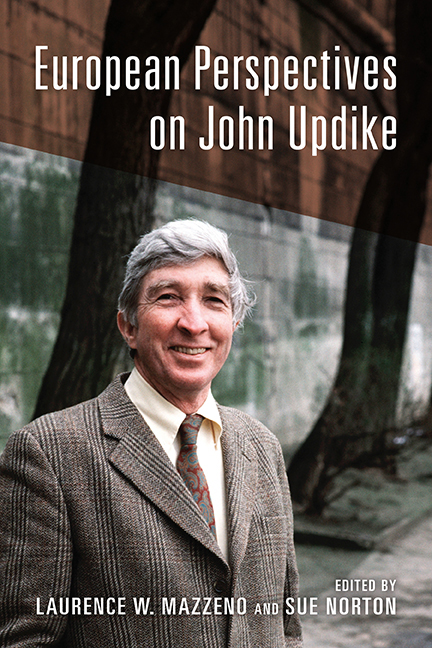Book contents
- Frontmatter
- Contents
- Acknowledgments
- List of Abbreviations
- Introduction: Updike as Europeans See Him
- Part I Coming of Age, Aging in Time
- 1 Under His Skin: Reconstructing the Adolescent Longings of a Would-Be Terrorist
- 2 “At the other end of life's rainbow”: Rabbit's Journey from Adolescence to Old Age and Other Transcendental Trajectories
- 3 Intimations of Mortality: Death's Shadow in Updike's Oeuvre
- Part II Love, American Style
- Part III Amazing Grace, American Faith
- Part IV Old World Myths, New World News
- Sources for Further Study
- Notes on the Contributors
- Index
1 - Under His Skin: Reconstructing the Adolescent Longings of a Would-Be Terrorist
from Part I - Coming of Age, Aging in Time
Published online by Cambridge University Press: 15 August 2018
- Frontmatter
- Contents
- Acknowledgments
- List of Abbreviations
- Introduction: Updike as Europeans See Him
- Part I Coming of Age, Aging in Time
- 1 Under His Skin: Reconstructing the Adolescent Longings of a Would-Be Terrorist
- 2 “At the other end of life's rainbow”: Rabbit's Journey from Adolescence to Old Age and Other Transcendental Trajectories
- 3 Intimations of Mortality: Death's Shadow in Updike's Oeuvre
- Part II Love, American Style
- Part III Amazing Grace, American Faith
- Part IV Old World Myths, New World News
- Sources for Further Study
- Notes on the Contributors
- Index
Summary
Writers, in so far as they perform a public service, try to expand your sympathies and lead the reader where they wouldn't ordinarily go.
—John UpdikeFiction and Terrorism after 9/11
A FEW WEEKS after 9/11, two essays—one by the critic James Wood and the other by the novelist Don DeLillo—discussed how writers, and in particular American novelists, would (or should) articulate what appeared to be a looming sense of cultural rupture imposed by the attacks. In “Tell me how does it feel?” Wood predicted a retreat from social realism after such a vivid demonstration of the helplessly unknowable. How, he asks, can the novelist's task still be “to go on to the street and figure out social reality” when the world has been rendered so opaque that no one “would dare to be knowledgeable about politics and society now?” Reading the cultural landscape immediately after 9/11 as a setting where it is no longer possible “to imagine Don DeLillo … writing his novel Mao II,” the essay forecasts the opening of a “space for the aesthetic, for the contemplative, for novels that tell us not ‘how the world works’ but ‘how somebody felt about something.’”
In contrast, DeLillo's (2001) “In the Ruins of the Future,” though not questioning the prevalent sense of historical caesura that Wood identified, stresses the urgency of a creative engagement with the seemingly fragmented and unreadable new realities. Insisting on the possibility of knowing “how the world works,” his essay points to the responsibility of writers to address the protocols of representation of the unaccountable, of an otherness so alien that it appears reduced to an idea, attempting to understand what forces shape the suicidal terrorist, and the “fire of aggrieved belief” that grounds his hard and tight “apartness,” dominated by a single plot of “judgment and devastation” that erases the humanity and vulnerability of the victim (34). Without that effort, DeLillo warns, “the sense of disarticulation” carried by the term “us and them” may become unbreachable (34).
- Type
- Chapter
- Information
- European Perspectives on John Updike , pp. 13 - 27Publisher: Boydell & BrewerPrint publication year: 2018



